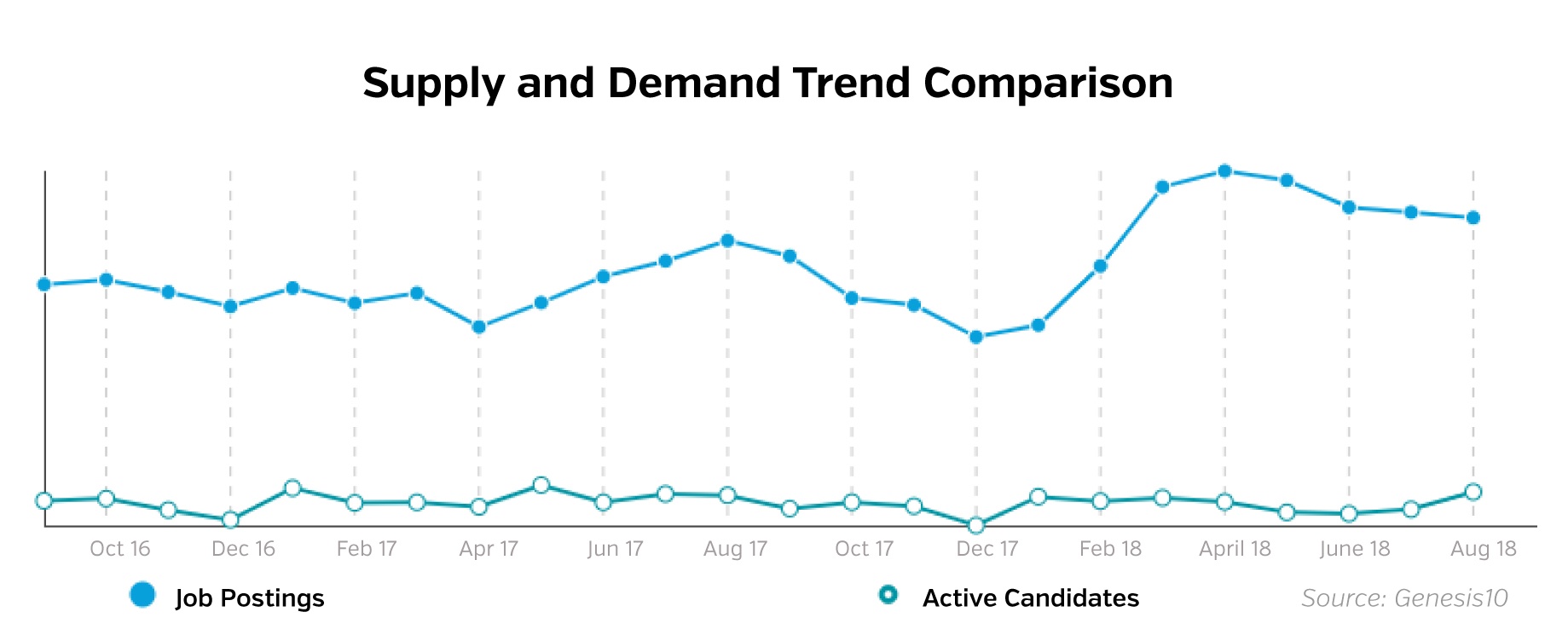This blog is the first in a series that examines the technology talent gap by major metro area serviced by Genesis10. Coming up we will also be looking at Austin, Cleveland, Des Moines and Kansas City.
Does Milwaukee have the tech talent it needs to meet forecasted demand? That’s a question civic, business and technology leaders are asking in the wake of the recent publication by local companies of Milwaukee’s Tech Talent Impact: An Overview of Tech Occupations and Tech-Dependent Industries.
The study shows that the region may need 31,000 more workers in the next five years to fill technology roles vacated by those retiring or changing careers. This forecast does not include the thousands of jobs expected to be created, including those Foxconn proposed earlier this year when it announced that it is building a U.S. headquarters and other facilities in the Milwaukee area, as we mentioned in the recent blog, Milwaukee Tech Talent Study Reveals Need for Workforce Strategy.
Even though a group of executives is collaborating on a new talent supply and demand study which will propose solutions to address the workforce challenges facing the region, let's look at the region's current workforce composition and respond to the question:
Does Milwaukee have the workers it needs to meet projected demand for 31,000 workers?
Based on a recent CompTIA survey of IT Business Executives across the U.S., nearly half see growth in the technical skills gap currently experienced by their organizations. While there are many reasons for the gap, 87% of the execs believe that colleges and universities are not preparing students properly to be successful in this current technology landscape. Another 89% believe this tech deficiency begins in K-12 schools. Consistently we hear how crucial the STEM (Science, Technology, Engineering, Mathematics) talent pipeline is to the global economy and in the State of Wisconsin it is no different.
To this end, the National Center for Education Statistics’ IPEDS database shows that the number of graduates in STEM fields has been steadily growing since 2009. In Wisconsin from 2010 to 2015, the number of graduates from these programs increased at a rate higher than the national average, reflecting the quality of Wisconsin’s STEM education and the increased focus its institutions have been placing on partnering at the State and Local level.
“Through focus, investment, commitment and innovation, more schools in Wisconsin have the resources to offer their students a STEM education that equips them with in-demand skills, valuable knowledge and encouragement to create…The most successful STEM schools in the state have close partnerships with local businesses, who will often donate funds, materials and technology. They, in turn, see the fruits of this investment in internships, apprenticeships and full-time employees.”
The strides that Milwaukee has made is encouraging to affect building workforce capabilities through education and partnership over the next 5 to 10 years. In comparison, the current landscape tells a different story which underscores the need for candidates with technology skills. The figure below highlights how few candidates are actively looking for a technology position. Tight labor markets and sheer demand for tech talent has created challenges in attracting and retaining the “right tech talent” to meet immediate resourcing needs. Immigration reform and talent misrepresentation have created additional uncertainty in the staffing process.

Based on Genesis10’s experience in Milwaukee, the most difficult skills to recruit for are, according to Anna Huf, Genesis10 Milwaukee Team Leader: Cloud, Developer and Business Intelligence / Data Analytics. Our experience over the past six months is consistent with the ComputerWorld 2017 Survey indicating that Security, Application Development and Business Intelligence and Analytics are the top three skills most difficult to recruit for in a tight talent market.
Lack of applicants, as well as hard and soft skills, coupled with low unemployment are key reasons employers cite the difficulty they have with filling open positions. Staffing companies and consulting firms alike are looking at talent pools through a different lens—by bringing back retirees, training to upskill or reskill, tapping returning military veterans or developing junior talent—to increase the workforce in the short term. Alternatively, they may capitalize on location strategy to shift where the work is being performed.
Over the next five years, we expect workforce gaps will be reduced due to the strong collaboration between Corporate America and our education system, but in the short-term, the gap will require creative approaches and investment to increase workforce capacity.














